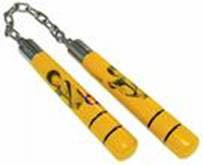
However, his program of improvements to the fortifications of the Bastille would be ignored, as was his project for the enlargement of the city walls to the south that he proposed during a second visit in July 1700. In his report, he described them as "weak, unfinished, poorly maintained, especially those of the Bastille", which he said were "badly cut, or rather a closed bauble, but without rhyme or reason, occupied by a vintner who is the governor, or at least who has the keys, with twelve cows, eight goats, a mare and a donkey for the whole garrison!". These works on the two branches of fortifications were completed in July 1619.Ī century after the construction of the Bastille, the military architect Vauban, during his first inspection of the fortifications of the Alps in September 1692, alerted the king, Louis XIV, to the weaknesses of the defences of Grenoble. These monumental gates still exist today, but as for the fortifications there remain only the vestiges of three bartizans and a staircase in the form of a tower in the Jardin des Dauphins. For the first time, a road cut in the rocks along the banks of the Isère meant that it was no longer necessary to cross the rocky spur by the Montée de Chalemont to get from one gate to the other. The Porte Saint Laurent upstream on the Savoy side of Grenoble was finished in 1615, and the Porte de France downstream was finished in 1620. In 1611, after a pause in the works, construction began on the fortifications descending from either side of the Bastille towards two new monumental gates situated at points on the banks of the Isère approximately 1 km apart. In the first few years Lesdiguières used the Piedmont architect Ercole Negro, then later, from 1611, the royal engineer Jean de Beins. The works encompassed the suburbs that had grown up around the original Roman city walls, thereby increasing the surface area of the city by 21 hectares, and were finished by December 1606.

New defensive walls were built, equipped with six bastions and two half-bastions capable of resisting artillery assault.

Īt the same time as these works were taking place, the Roman city wall, 13 centuries old and ill adapted to withstand the artillery of the time, was removed.
#Abandoned castle nearabric cap du blanc series
Comprising a tower and a series of small bastions, and with a building to lodge the troops, it was encircled by a wall approximately 1.3 metres thick around an area 68 metres long and 50 metres wide. This fortress, or bastille, which would give its name to the hill, was completed the following year in 1592. Second, a fortress on the summit of the hill so that no enemy could approach the city from the Chartreuse without being challenged. First, a small fortified citadel around the Tour de l'Isle (a square tower built on the banks of the Isère, which today stands next to the Museum of Grenoble) so as to have a safe place to withdraw to in case the city was attacked. In 1591, having become governor of Grenoble, Lesdiguières immediately ordered the construction of two new defensive elements for the city. But in spite of a permanent state of alert and 24 watch points in the city, Grenoble fell to Lesdiguières after more than three weeks under siege. There was a single canon positioned on the slopes of Mount Rachais because this rocky spur was thought to be enough of a natural barrier to deter the advance of hostile forces. With an army of 1,200 men gathered at Moirans, he marched towards Grenoble, passing through Saint-Martin-le-Vinoux and then over a spur of Mount Rachais called the Rabot, there avoiding a fortified stronghold. This took place during the eighth and last Wars of Religion. In December 1590 Lesdiguières, head of the Huguenots in the Dauphiné, took control of the city of Grenoble which had been until then under Roman Catholic control. Requests to fortify this hill had been made by Francis I in 1538 and by Charles IX in 1566, but these were not acted upon. The location of the fort was chosen because it facilitated the surveillance and control of the city of Grenoble, from the 19th century onward, as well as the valleys of the Isère and the Drac, all the while being difficult to attack and overthrow because of the cliffs and steep ground by which it is surrounded. The filling-in of this lake by alluvial deposits created the perfectly flat valley floors that are in evidence today. The melting of the Isère glacier approximately 25,000 years ago led to the formation of a vast lake stretching from Voiron to Albertville and which remained for approximately 10,000 years. The plateau of the fortress' main fortifications is situated 264 metres above a singularly flat valley floor which is glacial in origin.

The fortress lies on the final promontory of Mount Rachais, a narrow mountain that is the most southerly of the Chartreuse range.


 0 kommentar(er)
0 kommentar(er)
